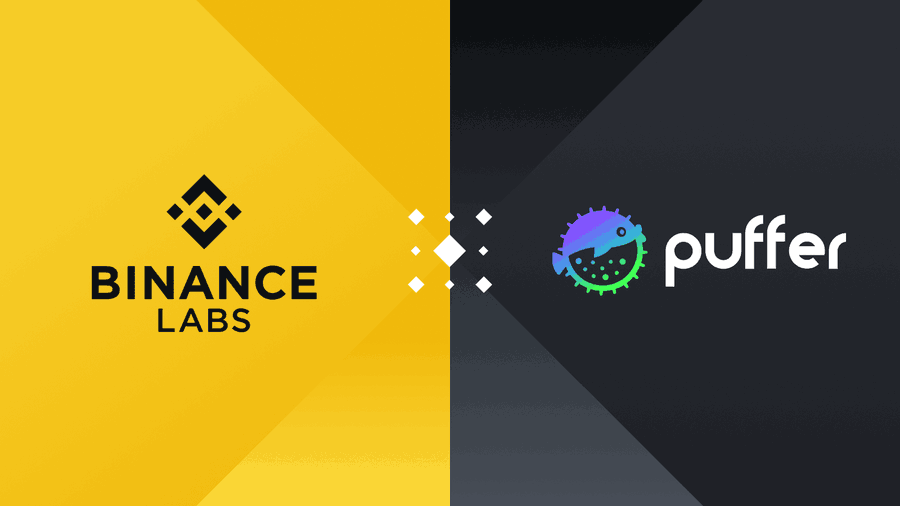The LST track is on the rise, with both new and old players having their own characteristics, but can they survive a round of bull and bear markets?
Author: DeMan
As of January 31, the LST tokens staked on Eigenlayer have exceeded 1 billion USD, making the LST sector thrive under Eigenlayer's token issuance expectations.

Meanwhile, Binance Labs announced an investment in Puffer Finance, further increasing the heat in the LST sector.

However, while we observe the development of LST, it is also necessary to recognize the pain points currently faced by the industry:
As the scale of Ethereum contracts continues to expand, enhancing the network's decentralization is particularly important. Currently, Lido holds a 31.8% share of the Ethereum staking market, which poses a potential threat to the security of the Ethereum network. Additionally, a large amount of ETH is locked in centralized exchanges, large mining pools, and relatively centralized LSD protocols, making these highly concentrated entities more susceptible to regulatory impacts, thereby weakening Ethereum's censorship resistance. To enhance decentralization and censorship resistance, the Ethereum network urgently needs to attract more participation from small-scale individual nodes.
Amidst the market's astonishment, it is necessary to interpret what Puffer Finance is and seize the potential opportunities within it.
The Threefold Pain Points Facing the LST Sector, Addressed One by One by Puffer Finance Through Innovative Methods
Puffer is a liquid staking protocol based on EigenLayer, dedicated to eliminating the barriers for individual nodes to participate in Ethereum staking. Puffer believes that the high threshold (32 ETH), the hefty penalties for validator errors, and the relatively low annualized returns are the three major issues hindering individual participation.
To address the aforementioned two issues, Puffer has developed Secure-Signer security signing and RAVe remote proof technology. By utilizing Intel SGX's trusted execution environment, it transfers validator key management and signing logic to the Enclave, enforcing signing logic and restricting access to the validator's private keys, thus preventing validation errors and the subsequent financial penalties.

Compared to DVT technology, Secure-Signer offers a more economical and practical solution. With the reduced risk of node financial penalties, Puffer has also lowered the node collateral to 2 ETH, significantly reducing the threshold for individual participation. These technologies have received recognition and support from the Ethereum Foundation.
Regarding the issue of low yields, Puffer is built on EigenLayer, allowing nodes to achieve higher returns through re-staking. Overall, Puffer is similar to Rocket Pool, but by utilizing its self-developed Secure-Signer technology, it has reduced the risk of financial penalties, enabling the node collateral to be lowered to 2 ETH, which helps enhance the competitiveness of individual staking. Puffer can also leverage EigenLayer for higher yields. These innovations help Puffer gain a larger market share.
Puffer Finance Received a $120,000 Donation from the Ethereum Foundation in Its Early Years, with a Total of Over $6.1 Million Raised in Two Rounds of Financing
The investors of Puffer are one of the reasons it is highly sought after by many users. In addition to the recently announced top-tier CEX Binance, Puffer received a $120,000 donation from the Ethereum Foundation in its early years, with Ethereum Foundation researcher Justin Drake serving as a team advisor. In its previous two rounds of financing, investors included EigenLayer founder Sreeram Kannan, Coinbase staking business head Frederick Allen, and other key participants in the LSD sector, providing Puffer with a solid foundation for development.

The first round of financing raised $650,000, led by Jump Crypto, with participation from Arcanum Capital and IoTeX;
The second round of financing raised $5.5 million, led by Lemniscap and Lightspeed Faction, with participants including Brevan Howard Digital, Bankless Ventures, Animoca Ventures, Kucoin Ventures, Sreeram Kannan (Eigen Layer founder), Frederick Allen (Coinbase staking business head), Shen Yu (co-founder of F2pool and Cobo), Richard Malone (Obol Chief Business Officer), Mr. Block (Curve core contributor), Ramble (President of the North American Blockchain Association), among others.
The strong background of its investors will also promote the healthy development of the protocol.
The Points Airdrop Activity Has Started, and It Is Worth Noting How Far Puffer Finance Can Go in the Future
Yesterday, Puffer launched a points airdrop activity. Users only need to connect their wallets and X accounts on the Puffer official event page, then retweet Puffer's posts to receive points for free. The points will be exchanged for Puffer tokens in the future.

The points activity adopts a team-based approach, which has led many KOLs to promote Puffer vigorously. Currently, the number of participants has reached 60,000, reflecting the rapid growth of the community and the high level of user interest.
As a rising star in the EigenLayer ecosystem, the most noteworthy aspect of Puffer is the upcoming Ethereum mainnet staking feature. At that time, users will be able to participate in Ethereum consensus directly through Puffer, significantly lowering the threshold for individual participation in validation.
With the dual support of capital and community, Puffer is expected to attract more users to adopt its innovative mechanisms to earn ETH staking rewards. This not only enriches Puffer's application scenarios but also helps promote the decentralization of the Ethereum network. We look forward to Puffer's product innovations bringing tangible value to users and fostering the prosperous development of the EigenLayer ecosystem.










